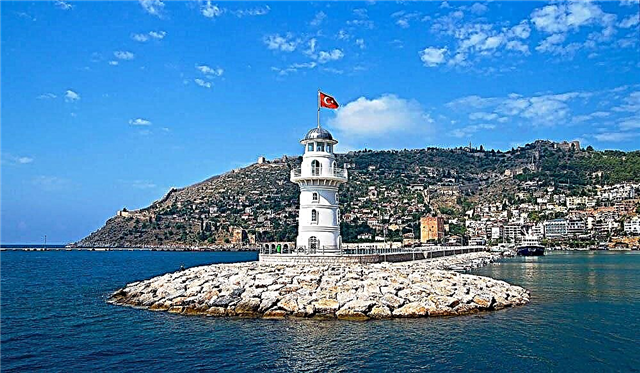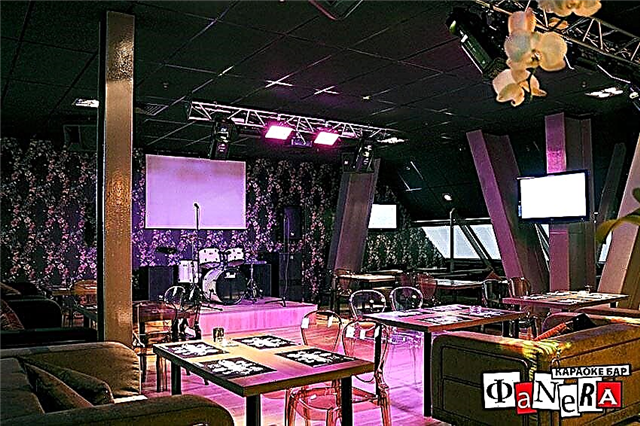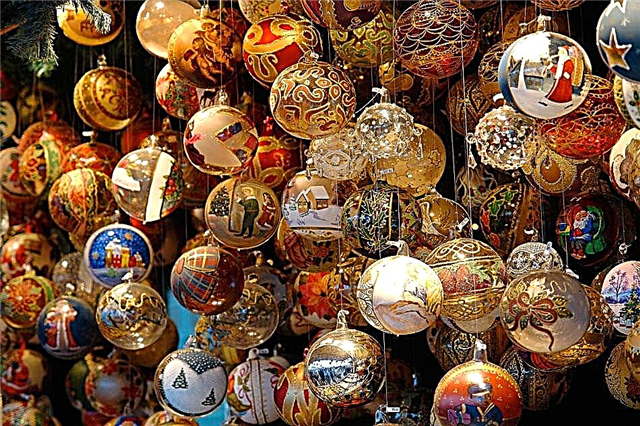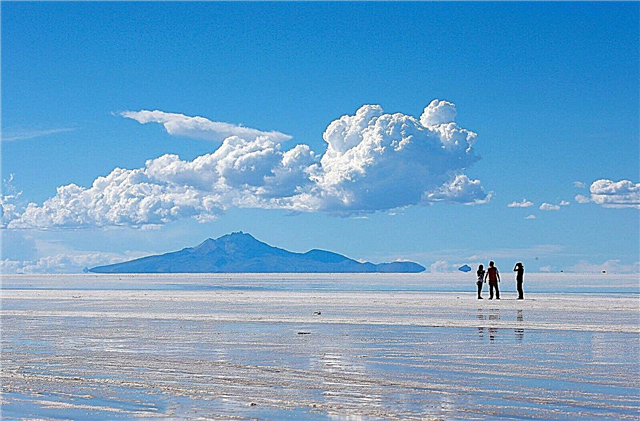The main lakes of South America are found throughout the continent, but many of them are concentrated in Argentina or near the borders of this country. Changes in the terrain millennia ago created unique bodies of water that were part of the ocean in the past. The water in them is mostly brackish, but there are those that have become completely fresh over the years.
Environmental problems and active use of lakes could not but affect them. So the Bolivian Lake Poopo in 2006 completely dried up. It's all the fault of the changed bed of the river that fed it and the inaction of people. In addition, other lakes have suffered a similar fate earlier. Now they are salt marshes, stretching for thousands of square kilometers.
The largest lakes in South America
List of the largest and most famous lakes on the mainland.
Maracaibo
Brackish lake of Venezuela. The area is about 13 thousand km². The name was given during the period of colonization. It means "the land of Mary" - after the name of the leader of the local tribe. There is a long bridge over Maracaibo, 8 km long. Tourists are attracted by the Chienagas del Catatumbo park on the southwest coast. Nearby, you can observe a natural phenomenon - flashes of lightning, not accompanied by sounds.

Uyuni
For the most part, this is a salt marsh, and not a full-fledged lake, since water rarely appears here. The area is 10.5 thousand km². The Bolivian miracle is considered the largest in the world of salty dried up bodies of water. Not only salt deposits are concentrated here, but also impressive reserves of lithium chloride. The best time to visit is the rainy season, as it is during this period that Uyuni is revealed in all its glory.

Patus
The largest lake in Brazil. Belongs to the lagoon type. The area is 10 thousand km². An 8 km long sandbar separates Patus from the Atlantic Ocean. The water level fluctuates greatly due to changes in runoff and precipitation. The city of Rio Grande is founded on the lake. Part of the coast is inhabited, part is covered with dense forests. Coal mining in the vicinity has a negative impact on the environment.

Titicaca
Belongs to both Peru and Bolivia. The area is 8.3 thousand km². The lake is navigable and famous for its floating islands where people live. The largest of them is Isla del Sol. It is home to about 5 thousand people. Scientists believe that Titicaca and its surroundings are the birthplace of the Incas. The ruins left from this ancient people attract tourists. There are hiking trails along the coast.

Lagoa Mirin
Located in Brazil near the border with Uruguay. It is connected with Patus through a narrow channel. The area is 3.7 thousand km². A swampy spit and sandstone separate the lake from the Atlantic Ocean. In terms of tourism, the surroundings are poorly developed. However, here you can rent a boat for a walk or fish. With an abundance of species, there is almost no commercial catch. Natural beauty is the main value of Lagoa Mirin.
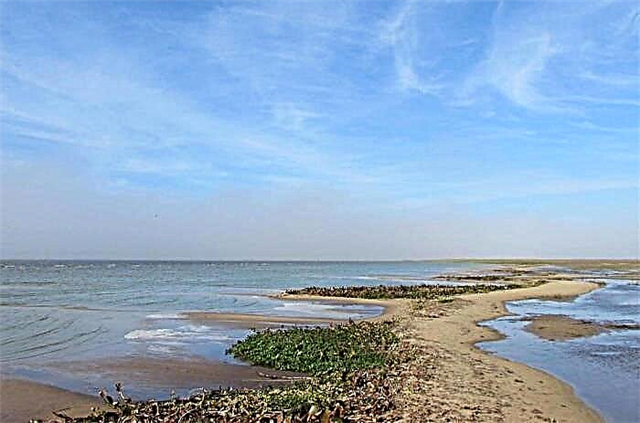
Koipasa
The drainless high-mountain lake belongs to the territory of Bolivia. Its area is 806 km². It is part of the salt marsh of the same name, which is partly located in Chile. The area is 2.2 thousand km². The main attraction of the area is Cerro Villa Pucarani, a volcanic cone about 1250 m high from its base. At a distance of 20 km is Uyuni - the largest salt marsh in the world.

Mar Chiquita
Salty closed lake in Argentina. The area ranges from 2-4 thousand km². This is due to shallow depth, evaporation and intermittent feed. The wetlands are home to many species of waterfowl, including Chilean flamingos and gulls. There is a large salt marsh on the northern coast. There are several islands on Mar Chiquita, including the largest, Medano.
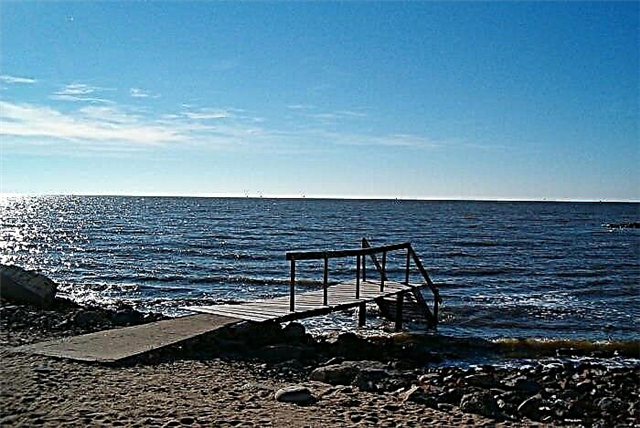
Buenos Aires
The deepest lake in South America is located on the border of Chile and Peru. The area is 1850 km², the maximum depth is more than 550 m. People come here to fish for trout and admire the marble caves. Special excursions have been developed that allow you to sail along the coast by boat with a stop at the picturesque cave labyrinths. The reserves of natural marble in Buenos Aires are estimated by researchers to be 500 million tons.

Lago Argentino
Located in Argentina in the Los Glaciares National Park. There are many glaciers in its vicinity, so the main source of the lake's food is melt water. The area of Lago Argentino is 1.4 thousand km². The area is attractive for tourists. There is excellent bite here with a sufficient variety of species. Although the nearby town is called El Calafate, it is sometimes named after the lake.

Poopo
Bolivian dry lake, whose area is approximately 2.5 thousand km². In 2006 it was announced that there was no water left in it. This was largely due to the change in the course of the Desaguadero River. The territory is suitable for stopping migratory birds. During rainy periods, flamingos can still be found in the area. The banks are covered with limestone, there are also wetlands. Lake Titicaca is in relative proximity.

Vietma
Argentine lake, located near the Chilean border. Moreover, the final ownership of its western coast has not been determined. The area is approximately 1088 km². Vietnam is powered by the glacier of the same name. The lake is part of Los Glaciares, a national park that is listed as a UNESCO World Heritage Site. The area is also visited within the framework of visits to Fitzroy - a peak popular for climbing among climbers.

San Martin
Another lake in the border area of Argentina and Chile. The area of the reservoir is 1010 km². Its shape is very sinuous, there are 8 large sleeves. The nature around is contrasting: green forests around, and snow-capped mountain peaks are visible in the background. Horseback riding tours, sport fishing competitions, visits to local settlements and old estates are organized. The waters of San Martin are renowned for their purity.

Llanquihue
Chilean Lake has an area of 860 km². Difficulties in the bottom topography have not yet made it possible to measure its maximum depth. The current name was given to the reservoir only in 1897. It means “sunken place”. The coastline is teeming with smaller towns and cities. One of the main attractions is Villa La Ensenada. Canoeing and hiking tours are organized for tourists.

Mangeira
Located in Brazil near the border with Uruguay. The area is 775 km². The entire lowland, where the lake is based, is swampy. Nearby you can find another lake - Lagoa Mirin. The Atlantic coastline begins on the other side. The coastline is long, which gives additional opportunities for tourism. Mannueira owes its formation to the separation of the shallow part of the ocean.

Colue Huapi
Located in Argentina. Over the years, its surface area has become less and less and now reaches about 736 km². The water is brackish, the surrounding of the lake is arid steppe. There are many grasses and bushes, but few trees. In terms of tourism, the northern coast is more interesting. There is an archaeological site here, including rock paintings and burials. Full-scale excavations were also carried out, which helped to discover new species.

Liancanelo
This unusual Argentine lake is also a wetland. The total area of the territory is 650 km². The climate in the area is arid, although the features of the relief do not make Liancanelo very dependent on the weather. The presence of a greater number of bird species is also a local feature. They inhabit the nature reserve that surrounds the lake. The most interesting are flamingos and white swans with black necks.

Fagnano
Belongs to both Argentina and Chile. The name is given in honor of a Christian missionary who visited here at the end of the nineteenth century.The largest lake on the island of Tierra del Fuego. From it flows the only river - Asopardo. The area is 593 km². Fagnano is shaped like a fjord. The Argentinean part of the lake is part of the Tierra del Fuego National Park, which is periodically expanded.

Nahuel Huapi
The translation of the name of this Argentine reservoir is "jaguar lake". The area is 530 km². Nahuel Huapi has a winding shape with intersections and branches that look more like fjords. The country's most national park is located around. A small part of its territory is closed to outside visits. Tourism is developing actively and affects different areas, winter types of recreation.

Junin
The largest lake in Peru. Area - 529.88 km². The surroundings of the lake are a real find for nature lovers. In addition to endemic species, which are abundant here, there are also quite common species. Some were brought in and "planted" artificially, for example, salmon fish. The surface of Junin is in some places covered with dense flood vegetation, and there is also plenty of greenery around.

Moosters
Named after the adventurer and is located in Argentina. The area is about 450 km². Since the average depth is about 20 m, the shade of the water is saturated. On the southern coast, the bed of the river that feeds the lake is very ramified. Lake Colue Huapi is nearby. These two bodies of water are often referred to together as a single system. When ecological excursions are held, they are also visited sequentially.

Ranko
Belongs to the territory of the province of the same name of Chile. The area is 401 km². For not too large sizes, the average depth is impressive - about 122 m. There are islands on Ranko, including the largest of them called Guapi. The coast is inhabited on all sides, although there are gaps between villages and towns. Only one river flows out - the Rio Bueno. She carries the waters of the lake to the Pacific Ocean.

Cardiel
Located in Argentina and covers an area of 370 km². From a bird's eye view, its outline resembles a heart. The diet of the lake is varied and not fully understood. A village is founded on the coast. The main attractions of the area are archaeological sites of different periods. Due to the arid climate, there is not much of a difference when to visit Cardiel: it is comfortable in any season and you can find some peculiarity.

Valencia
The second largest lake in Venezuela has an area of 344 km². For two nearby large cities, it is a vital source of drinking water. There are 22 islands in Valencia. The tourism industry in the district is just beginning to develop. The main problems in terms of pollution and changes in water composition are associated with active use, as well as with abundant algal blooms.

Laguna Colorado
Another name is Red Lake. It is located in the Eduardo Avaroa nature reserve of Bolivia. Area - 60 km². Water due to algae is colored in different shades from pink to brown. A number of factors affect color, including air temperature. The second feature is the large number of flamingos. At the same time, representatives of different subspecies, including the most rare ones, gather here.

Peach Lake
Location - Trinidad Island. Area - 0.47 km². The translation of its name - "bituminous lake" - defines the main feature of the reservoir. It consists of pure liquid asphalt. The production is carried out on an ongoing basis, the reserves will last for 400 years. It is the largest natural asphalt reservoir on the planet. Over the past decades, it has also developed as a tourist destination.


